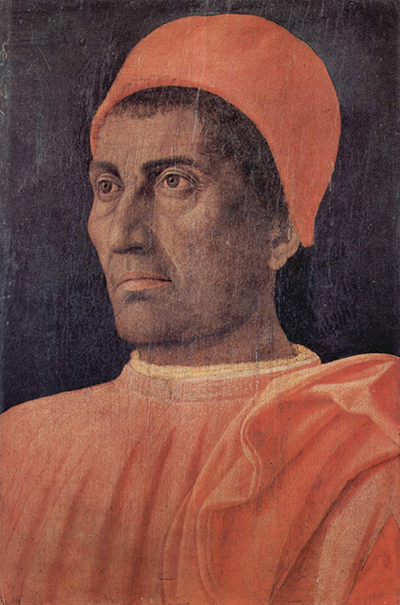Portrait of Carlo de Medici is a portrait by Andrea Mantegna (1431 - 1506), an Italian painter. Mantegna's main experiment was with perspective. The portrait was most likely created in 1466 and now resides in Uffizi Gallery, an art museum in Florence, Italy.
The museum is very prominent and holds a lot of artwork, most of it coming from the Itallian Rennaisance which also includes the portrait itself. After the house of Medici came to no longer exist their official collection of artwork was given to Florence. The City of Florence itself is considered the origin of the Renaissance and as a result attracted a lot of artists there.
There is little information on the portait itself and the fact that it portrays Carlo de Medici is an assumption. A member of the prominent Medici family, Carlo de Medici was a priest. Carlo de Medici's illegitimacy is suggested in the portait by his eyes being painted blue. Carlo de Medici's father, Cosimo de' Medici (banker and politician) fathered Carlo with a Circassian concubine.
For a long time, the potrait was thought to be created by Domenico Veneziano, a painter from Italy in the Early Renaissance. It is believed that Andrea Mantegna completed the portrait when he was commissioned to create several official artworks. There is also a theory that he could have created the portrait when he travelled to Florence in 1466.
Mantegna's play with perspective is shown in the portrait by how his view is not profile or straight on. Carlo's skin is painted dark and is dressed in the official outfit of the protonotary apostolic which is a position in the Roman Catholic Church. Carlo was well known for being in this role and did not leave it until 1463 - three years before Mantegna supposedly painted Carlo de Medici.
As this was an official commissioned painting, there is little other detail than the subject. There is an absence of any other elements such as religious or political and merely focuses on the garments as well as the priest Carlo de Medici himself.




